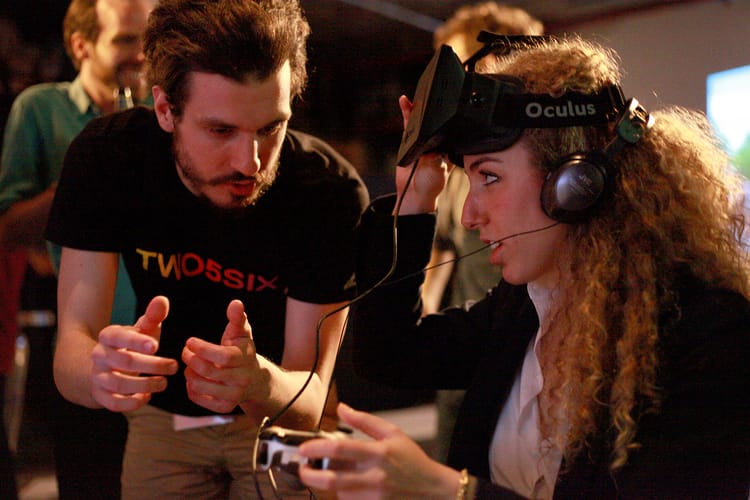The importance of frame-rate to a Counter-Strike pro

This article is part of a collaboration with iQ by Intel.
Improving skills led “n0thing” into competitive esports, but fine-tuning his PC helps him outplay others.
Jordan “n0thing” Gilbert was 16 when he gave up ice hockey to focus on conquering a new, uncharted frontier: the competitive esports world of Counter-Strike. After putting down his hockey stick for a PC, he climbed up the amateur circuit until he hit a wall. His vastly improved gameplay skills pushed his computer to its limit, and that held him back from reaching the coveted invite-level competitions. “That’s when my parents knew,” said Gilbert. “If I was going to get anything for Christmas, it was going to be a computer that could run Counter-Strike as well as possible.”
This has become a real phenomenon ever since gamers began making a good living playing games, said Travis Jank, a custom PC builder who owner of NexGen Computing who was recently in the PC modder competition “Expert Mode.” “I get parents coming to me because they’re convinced their kid has a talent for gaming, so they want to get a PC that can kickstart their career in competitive gaming,” said Jank. It’s like a musician getting a high-quality instrument that helps them develop the skills to play at higher levels.

Two years later in 2008, after getting his first gaming PC for Christmas, Gilbert upgraded to an Intel Core 2 Duo E8600 processor. That paved the way to signing with Counter-Strike team Evil Geniuses. That fall the team placed 3rd in the Intel Extreme Masters III Global Challenge Los Angeles.
Since then, Gilbert has competed at the highest level, evolving his hardware to adapt to the increasingly competitive world of professional esports. After Evil Geniuses, he joined Complexity then signed with top-tier team Cloud9. Gilbert’s PC needs to keep up with the incredible speed of his second-to-second strategic decision-making. “If things aren’t smooth, it affects your entire reality,” he explained. “Having a sub-par performance would be like a football player playing in the mud versus on grass.”
top-level players require a frame-rate well over 200 fps
In addition to practicing eight to 10 hours per day at the team house in California, Gilbert relies on his rig to give him that razor’s edge advantage during the heat of competition. His slightly overclocked Intel Core i7 5930K processor enables him to run the game at fast frame rates. While standard rigs usually strive for 60 frames per second (fps), Gilbert asserts that top-level players require a frame-rate well over 200 fps.
Players love debating the number of fps needed to run Counter-Strike competitively, but there’s no controversy in pro-circles. If a monitor has more frames to choose from, there’s less of a delay between player input and what the screen grabs when it refreshes. Otherwise, Gilbert said, “you’re definitely going to play worse.”

As Intel gaming strategist Mark Chang explained, smoothness matters most when it’s down to the wire in a match. “Let’s say you’re in a Counter-Strike match, wandering around, looking for an enemy,” he explained. “Your frame-rate shoots up because there’s not much going on.” But the minute you turn a corner to face an enemy, a whole host of new tasks need to be processed by the central processing unit (CPU), including physics and player input, according to Chang. He said frame rates can drop, bringing an inconsistent experience that can negatively impact competitiveness.
Without the necessary power, frame-rate plummets, leaving players exposed in more ways than one, making a powerful rig increasingly important, Gilbert explained. “With Counter-Strike back in the day, you could get away with [less power],” he said. “People would always joke, ‘Oh, I’m playing this game on a Game Boy.’” But by now, the joke has lost its punch.
Streaming, however, can take its toll on a player’s PC
With tournament setups becoming more standardized as esports grows more professional, teams have few (if any) qualms about dropping out if certain events fail to offer top gear. Gilbert likened PC performance in Counter-Strike: Global Offensive (2012) to a car in Formula 1 racing. A driver won’t win a competition with a sputtering car or vehicle technology that can’t deftly respond to the driver’s deftly trained maneuvers. In part, the issue stems from the constantly evolving nature of the game and gear. Esports titles receive constant updates and tweaks, requiring top players to upgrade and overclock their gear to accommodate various gameplay conditions.

Gilbert’s rig also allows him to express his personality. He’s known to let loose with freestyle raps, which can be seen on his well-followed Twitch channel. It also helps him develop relationships with his fans. He admires the rise of streaming culture, and he respects the moxy of players who, regardless of technical skill, can still acquire “massive followings because people like how they play games or like their sense of humor.” Streaming, however, can take its toll on a player’s PC. Dependent on the mega-tasking capabilities of a high-frequency CPU, quality streaming requires a PC not only run Counter-Strike beautifully, but also simultaneously and seamlessly run Twitch, audio programs, DVRs and more.
Much like the ice hockey Gilbert gave up, esports often requires players to purchase the right equipment to excel. While a gaming rig is only as strong as the player behind the wheel and a lux CPU won’t transform players into world champions, Gilbert recommends using what works best for the player’s skill level, budget and goals. “You just want gear that you like and are comfortable with,” said Gilbert. “You can’t short-change yourself if you truly want to get there.”
///
Header image via Internetum




Comments ()